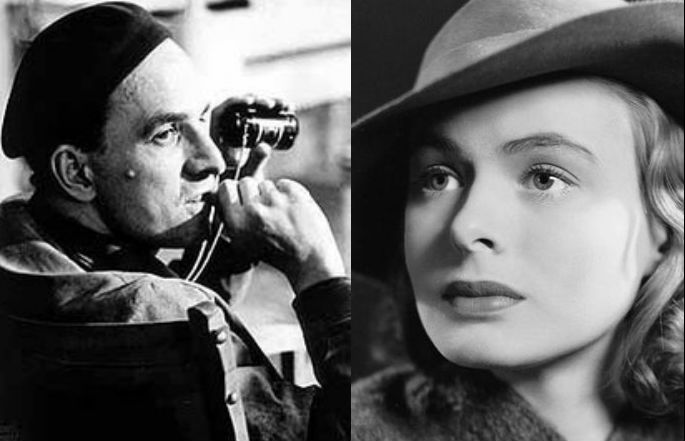Hear that a local theater is hosting a Bergman festival, and the first thought that will pop into the heads of most art-house denizens will be that of the great Swedish director Ingmar Bergman. An icon for the ages, the director’s films — The Seventh Seal, Fanny and Alexander, etc. — came to define “foreign film” for a generation of moviegoers. There have been a whole lot of Ingmar Bergman festivals over the years, and it’s fair to say that he deserved them all.
But there is another Bergman. One who is by most measures far more popular, and certainly one whose work has reached more people. Her name is Ingrid Bergman — a wonderfully close permutation of the director’s name that has always seemed to me to signal that the two were meant to be a pair in the film world: one esoteric and seemingly impenetrable, the other co-starring with Bing Crosby and Cary Grant, but both providing deep and resonant work. And this month, it is Ingrid, and not Ingmar, who is the subject of Amherst Cinema’s special film series.
On Sunday and Tuesday, the theater screens Autumn Sonata, the 1978 feature that was — just to add to the confusion — the only collaboration between the two Bergmans. With Ingmar behind the lens, Ingrid steps into the role of Charlotte, a cold, wounded woman whose career as a concert pianist has left little time for maternal concerns. When she visits her daughter Eva in the village where she resides, the pair — along with Eva’s paralyzed sister, whose appearance on the scene comes as something of an affront to her mother — finally air their long-held grievances.
The series continues through the end of June, spanning decades of Bergman’s career. If you missed the opening, you’ve already missed her best known work (Casablanca), but still have a rare chance to catch George Cukor’s 1944 film Gaslight, in which Bergman plays a young wife whose husband, in a bid to inherit her wealth, schemes to convince her that she is losing her mind. It was a performance and a film so affecting that even today, we still use the term “gaslighting” to refer to a type of abuse where victims are manipulated into doubting their own perception of reality.
Also this week: For many years, it has been both a point of pride and a bit of an embarrassment to say that I was one of the first in line to pick up issue No. 1 of the original Teenage Mutant Ninja Turtles comic. I’m not sure what it was that hooked me in, but it kept my attention in a strange way that many superhero books of the day (mid-1980s, I was 11 or so) did not. Maybe it was that these heroes ate pizza and lived in the sewer instead of a fortress made of magical crystals. Whatever it was, I ate it up for a good while before the 1986 publication of the Dark Knight series made TMNT seem hopelessly cartoony.
Now it’s back, on the big screen (at local Cinemark Theaters) and with a cast that makes me wonder if something has changed. The new film is Teenage Mutant Ninja Turtles: Out of the Shadows, and it’s a follow-up to the 2014 reboot of the series. Megan Fox and Will Arnett return from that film, joined by Laura Linney, Stephen Amell (TV’s Arrow, and here playing a similar street vigilante type), and the returning Tony Shaloub (Monk). I will confess to some disappointment on hearing that Saturday Night Live alum Fred Armisen, who was originally announced to be voicing Krang (sort of an alien blob mastermind) had been replaced by the more generic Brad Garrett of Everybody Loves Raymond fame. To be sure, even the best Turtles movie is unlikely to be fodder for the festivals of the future, but for aging fans who may have forgotten the joy they once brought, it could be worth a trip to the multiplex.
Jack Brown can be reached at cinemadope@gmail.com.




